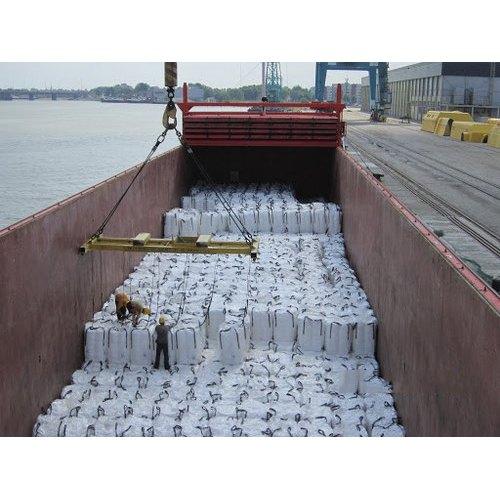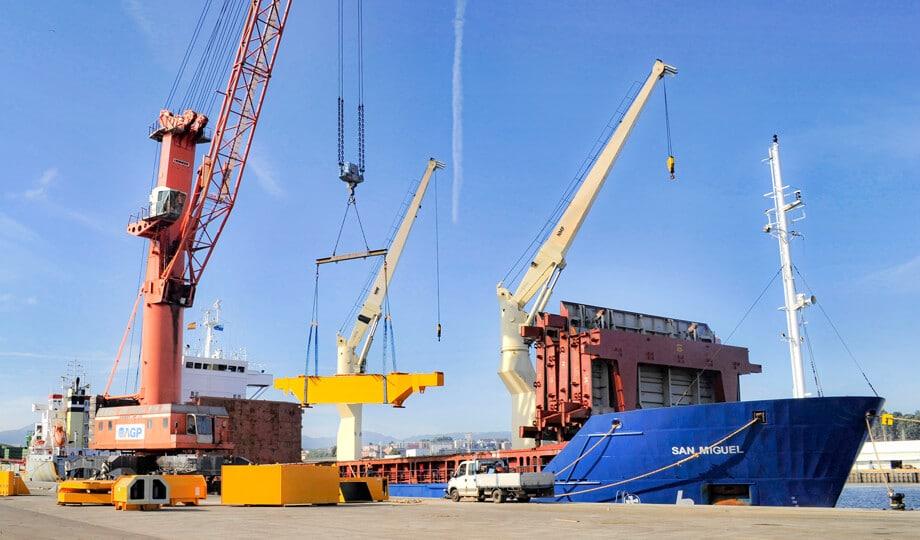When it comes to the intricate world of global trade, the smooth transport of break bulk cargo is the unsung hero that keeps industries moving. From raw materials to heavy machinery, break bulk cargo logistics plays a vital role in ensuring that goods reach their destinations efficiently and safely. In this article, we delve into the fascinating world of break bulk cargo transport and shipping, exploring the challenges and triumphs of this vital aspect of the supply chain.
Understanding Break Bulk Cargo and its Importance in Logistics
Break bulk cargo refers to goods that are loaded individually, rather than in containers or bulk cargo. This type of cargo is typically loaded onto pallets, crates, or drums and secured on ships. Break bulk cargo can include heavy machinery, vehicles, construction materials, and other oversized items that cannot be easily containerized. The handling of break bulk cargo requires specialized equipment and expertise to ensure safe loading, transportation, and unloading.
In the world of logistics, break bulk cargo plays a crucial role in the movement of goods across the globe. By allowing for the transportation of oversized and irregularly shaped items, break bulk cargo enables businesses to efficiently ship a wide variety of products. This type of cargo is often used for project cargo, where large quantities of goods need to be transported for construction projects, oil and gas exploration, or other industrial activities. Break bulk cargo logistics requires careful planning and coordination to ensure that goods are delivered on time and intact to their destination.

Challenges Faced in Break Bulk Cargo Shipping and How to Overcome Them
One of the main challenges faced in break bulk cargo shipping is the lack of standardization in packaging. Different types of cargo require different handling procedures and equipment, leading to inefficiencies and higher costs. To overcome this challenge, it is important to work closely with shippers to establish clear packaging requirements and ensure proper handling throughout the shipping process.
Another common challenge in break bulk cargo shipping is the risk of damage during loading and unloading. Fragile or irregularly shaped items are particularly vulnerable to mishandling, which can result in costly delays and losses. To mitigate this risk, it is essential to provide comprehensive training to all personnel involved in the loading and unloading process, as well as investing in specialized equipment and protective packaging materials to ensure the safe transport of break bulk cargo.

Tips for Efficient Break Bulk Cargo Transport Management
When it comes to efficiently managing break bulk cargo transport, there are several key tips that can help streamline the process and ensure smooth operations. One important tip is to properly plan and coordinate all aspects of the transport process, including scheduling, packaging, and handling. By carefully planning each step, you can avoid delays and minimize the risk of damage to the cargo.
Another important tip is to work closely with reliable and experienced transport providers who have a strong track record of handling break bulk cargo. By partnering with trusted professionals, you can ensure that your cargo is handled safely and efficiently throughout the entire transport process. Additionally, utilizing specialized equipment and technology, such as heavy-duty cranes and tracking systems, can further enhance the efficiency of break bulk cargo transport operations.

Best Practices for Handling Break Bulk Cargo During Shipping Operations
When handling break bulk cargo during shipping operations, it is crucial to follow best practices to ensure smooth and efficient logistics. One key practice is to carefully plan and coordinate the entire transportation process to minimize delays and damages. This involves proper documentation, effective communication with all parties involved, and meticulous execution of loading and unloading procedures.
Another important practice is to prioritize safety measures to protect both the cargo and the personnel handling it. This includes utilizing appropriate packaging and securing methods, conducting thorough inspections before and after transportation, and providing training to staff members on proper handling techniques. By adhering to these best practices, companies can streamline their break bulk cargo operations and optimize their shipping processes.
Final Thoughts
In conclusion, break bulk cargo logistics play a crucial role in the transportation and shipping industry. The intricate process of handling, stowing, and transporting these unique cargoes requires precision, efficiency, and careful coordination. From specialized equipment to strategic planning, every step in the journey of break bulk cargo is essential to ensuring timely delivery and customer satisfaction. As the global economy continues to evolve, the demand for break bulk cargo transportation will only grow, making it an exciting and dynamic field to be a part of. So next time you see a massive piece of machinery or a towering stack of lumber being transported, remember all the behind-the-scenes work that goes into making it happen. With a blend of innovation and expertise, break bulk cargo logistics will continue to shape the future of shipping.
